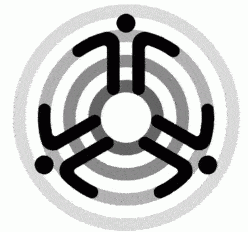The IEEE 1394 Standard was originally created as a replacement for the SCSI interface. Three versions of the IEEE 1394 Standard have been approved by the Institute of Electrical and Electronics Engineers (IEEE):
- 1394-1995:The original concept for a high-speed serial interface was conceived by Apple and the final Standard, 1394-1995, is based on Apple developed technology. The interface has the following capabilities:
- Data transfer rates of up to 400 Mbps.
- Bi-directional transfers.
- High speed data transfer.
- “Hot plug” connectivity (equipment using the interface can be connected and disconnected while the computer is powered on).
- Digital interface.
- A maximum cable length of 4.5 metres.
- 1394a:Was finalised/adopted in 2000. It provided specifications for enhanced performance and power management on the FireWire bus.
- 1394b:Was finalised/adopted in 2002. It supports a theoretical maximum speed of up to 3.2 Gbps at distances of up to 100 metres. It allows new types of media to be used for FireWire connections (e.g. fibre optic cabling).
IEEE 1394a supports the following speeds:
- 100 Mbps (S100)
- 200 Mbps (S200)
- 400 Mbps (S400)
IEEE 1394b supports a maximum speed of 800 megabits per second and is backward compatible with 1394a.
A maximum of 63 devices can be connected to one IEEE 1394 bus. The maximum number of bus-powered devices depends on the amount of power required by each device and the amount of power that can be provided by the computer.
Most IEEE 1394 equipment and interface ports support IEEE 1394a. At this time, IEEE 1394b is most commonly found on products from Apple.
IEEE 1394a is also known by the brand names “Firewire 400” and (to a lesser extent) “i.LINK”. IEEE 1394b is also known by the brand name “FireWire 800”.
Contents
Cables and interface
IEEE 1394 enables one cable to simultaneously carry digital video signals, digital audio signals, computer data and control signals. Cables are available in a variety of lengths. There are three types of connectors/ports:
- 6-pin (Firewire 400. Can act as a power source for peripheral devices).
- 4-pin (Firewire 400. Does not provide power to peripheral devices).
- 9-pin (Firewire 800. Can act as a power source for peripheral devices).
Cables can have different combinations of connectors:
- 6-pin to 6-pin.
- 6-pin to 4-pin.
- 4-pin to 4-pin.
- 9-pin to 9-pin.
- 9-pin to 6-pin.
- 9-pin to 4-pin.
- Adapters are available to “downsize” a 6-pin connector to a 4-pin connector.
- FireWire 400 devices/ports use either a 6-pin or 4-pin connector.
- FireWire 800 uses the 9-pin connector and 9-pin port.
- FireWire 400 products require an adapter cable in order to be used on a FireWire 800 port.
- A FireWire 400 device can be plugged into either type of port (400 or 800) once it uses the appropriate connector.
- FireWire 800 speeds can only be achieved if the FireWire 800 device is connected to a FireWire 800 port.
Bus power:
IEEE 1394 has been designed to allow devices to be powered through the IEEE 1394 cable (e.g. FireWire 800 can provide up to 45 watts, with a maximum of 1.5 amps and 30 volts). Devices receive power only when they actually need it. One of the best examples of such a device is the Apple iPod digital music player: “FireWire” is the sole data and power connection. The iPod recharges its built-in battery while downloading music from the computer.
4-pin IEEE 1394 connectors/ports do not carry power therefore devices (which have those ports/are connected to such ports) will not receive power from the IEEE 1394 bus. They must be powered separately.
Applications
The most popular application of IEEE 1394 is as a data transfer interface for audio/visual (A/V) equipment and desktop and portable computers. Examples of that interface include connecting:
- A/V devices to prosumer/professional editing equipment.
- high resolution scanners to desktop and portable computers.
- high speed optical drives (CD/DVD “burners”, DVD players) to desktop and portable computers.
- external hard drives to desktop and portable computers.
- consumer-level video cameras to desktop and portable computers.
Firewire and i.LINK
The IEEE 1394 Standard is sometimes refered to as “Firewire” and (to a lesser extent) “i.LINK” but this misleading because these terms (“Firewire” and “i.LINK”) are actually brand/marketing names and trademarks, not the actual Standard.
“Firewire” is Apple’s brand/marketing name for IEEE 1394 and related technologies. “i.LINK” is Sony’s brand/marketing name for IEEE 1394 and related technologies. Vendors and manufacturers who wish to use these names and logos to promote their own products must enter into a licensing agreement with either company. Strictly speaking, hardware and software should be advertised as IEEE 1394 (a or b) compliant/compatible rather than “Firewire” or “i.LINK” compliant/compatible.
According to Apple’s website:
The FireWire Logo is an Apple trademark and must be licensed for use by third-parties. There is currently no licensing fee. The agreement is a 5-page Adobe Acrobat file, and contains all the information and guidelines third-party developers need to license the FireWire Logo for use on product packaging, advertising, and other product marketing materials.
For the non-technical consumer: IEEE 1394, “Firewire” and “i.LINK” are compliant/compatible with one another because they are the same Standard. That is, an “i.LINK” device would work if plugged into a “Firewire” port and vice-versa.
When purchasing IEEE 1394 equipment be aware of the following:
- IEEE 1394, “Firewire” and “i.LINK” are the same Standard.
- You may have to pay more if there is a (“Firewire” and “i.LINK”) brand name.
- “Mac” devices can be used with a “PC” and vice-versa. However, be alert for device-driver issues.
- Cables can be used interchangebly with Macs and PCs as long as they have the appropriate connectors.
- Manufacturers may not explicitly state their device is “Firewire” or “i.LINK” compatible in order to avoid licensing agreements with Apple and Sony. If it is IEEE 1394 compliant/compatible, it should work.
Trivia: Most people refer to IEEE 1394 as “Firewire” for many reasons:
- IEEE 1394 sounds “too technical”.
- “Firewire” is more “user-friendly” (sounds “better” than either “IEEE 1394” and “i.LINK).
- End users find it easier to remember the term “Firewire”.
- Apple has been better at marketing the “Firewire” brand name than Sony has with “i.LINK”.
Disclaimer
Information on this page is subject to change without further notice. If you use any information from this page, you do so at your own discretion and risk and you are solely responsible for any and all: financial loss, damage to your equipment or loss of data that may result directly or indirectly from such use. In other words, if you screw-up, or your equipment or data gets screwed up, it is 100 percent YOUR fault! Don’t blame anyone else.

